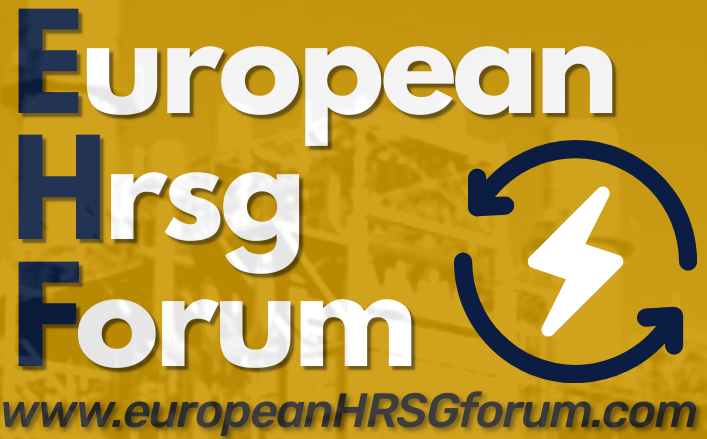2026 Annual Conference Prato, Italy May 19–21
The eleventh annual European HRSG Forum (EHF2025), held May 13–15 in Prato, Italy, drew 95 participants from 20 countries, including 27 users. Co-chaired by Barry Dooley of Structural Integrity and Bob Anderson of Competitive Power Resources, EHF2025 continues its mission of advancing best practices and global knowledge-sharing in combined-cycle and HRSG operations. The event, organized by Mecca Concepts, is supported by IAPWS in association with ABHUG and the US and South America HRSG Forums.
EHF2025 offered 23 technical presentations, including a workshop on cycle chemistry, and featured strong international representation across plant operators, OEMs, engineers, consultants, and vendors. Seventeen sponsors supported the event: Precision Iceblast Corp, NEM, Dekomte, Freudenberg Flow Technologies, TÜV Rheinland, New Componit, Advanced Valve Solutions, Tuff Tube Transition, TesTex, Quest Integrity, Metroscope, OMB, Pruss, Fuel Tech, Arnold Group, IMI, and Thermic Systems.
Global priorities: aging fleets, flexible ops, and cycling fatigue
A consistent theme across presentations: reliable, flexible operation of aging HRSGs remains a top concern for users worldwide. Daily cycling, faster startups, and deeper turndowns are placing growing stress on pressure parts and internal components, especially in:
- Superheaters and reheaters (creep and fatigue failures)
- HP evaporators (FAC and under-deposit corrosion)
While pressure-part upgrades using modern materials are often proposed, many operators find these investments difficult to justify amid long-term plant uncertainty.
The European Pressure Equipment Directive (PED) was also highlighted, especially in Germany, where HRSGs must meet stricter design and compliance requirements beyond ASME code.
Plant cycling has also impacted inline valves such as main steam stops. Inspections and design improvements are now essential for ensuring durability under cyclic conditions. Additionally, SCRs with enhanced performance are becoming mandatory in many new combined- and simple-cycle applications.
One notable development: ammonia vaporization without hot gas fans, offering potential cost and maintenance reductions in SCR systems.
Tube failures: prevention, inspection, and root cause clarity
HRSG tube failures (HTFs) continue to dominate reliability discussions. Key takeaways:
- Only 8% of plants globally have a formal HTF reduction program in place.
- Successful programs require top-down commitment and cross-functional involvement.
- New templates and benchmarking tools for tube failures, FAC, and cycle chemistry are available.
Root cause accuracy remains vital. Case studies emphasized the need for experienced metallurgists to avoid misdiagnosing the failure mechanism. The correct determination of fatigue, FAC, or UDC is critical to prevent repeat events.
Flow-accelerated corrosion (FAC) again topped the list of tube failure mechanisms. Presenters detailed:
- The role of pH control in two-phase FAC
- Importance of oxidizing power in preventing single-phase FAC
- The linkage between UDC and poor chemistry, often worsened by corrosion product transport
Case studies included robotic waterside inspections that now allow access to upper headers for thickness readings. Efforts are underway to enable robotic internal deposit density measurement for HP evaporators.
Innovative repair methods, such as tube sleeves, are gaining traction as cost-effective, short- to mid-term solutions to extend unit life.
Cycle chemistry: global benchmarking and new procedures
Dooley presented global chemistry benchmarking results and the latest IAPWS guidance. New data show:
- 86% of plants lack effective corrosion product monitoring
- 80% operate with substandard instrumentation
- 78% do not monitor drum carryover
- 73% do not question legacy chemistry practices
A new IAPWS decay map and corrosion product monitoring procedure now allow operators to evaluate the effectiveness of chemistry during operation and shutdown.
Updates on Film Forming Substances (FFS) noted:
- Documented reductions in corrosion product transport in water-touched circuits
- Limited or questionable protection in steam circuits
- Risk of under-deposit corrosion and “gunk” formation when pre-application steps are skipped
- Reports of increased HP evaporator fouling and deposit load when FFS are misapplied
Attendees also received updated IAPWS Technical Guidance Documents (TGDs) for combined-cycle plants.
Transients, valves, and layup risks
Thermal transients continue to drive operational issues. The latest data show:
- 85% of plants experience leaking spray water at attemperators
- 92% use valve logic that encourages leaks
- 37% report overspray, 30% allow manual control, and just 20% routinely inspect attemperators
- Only 38–40% effectively drain the HPSH/RH during startup
Valve-specific sessions covered high-temperature gate, globe, and check valves, relifing of main steam stops, bypass pressure control valve selection, and the benefits of combination stop/check valves.
Two HRSG layup failure scenarios were flagged for potential safety impact:
- Leaking or open cold/hot reheat isolation valves on a non-operating HRSG during 2×1 operation can allow steam from the operating unit to backflow and flood the reheater. If undetected, this condition may lead to water hammer or even steam turbine water induction during restart. Installing an alarm to detect positive pressure in a non-operating reheater can provide critical early warning.
- During hot layup, normal condensation in the high-pressure superheater (HPSH) can accumulate at the bottom of certain harps, forming a loop seal. This trapped water can migrate upward into hot headers and pipework, posing a risk during startup if not properly drained. A differential pressure alarm between the HPSH outlet and HP drum can help detect this condition and prevent damage.
Fireside cleaning and plant performance
Gas-side fouling remains a primary performance issue for HRSGs. Two cleaning technologies received attention:
- Ice blasting
- Pressure waves
For HRSGs with badly fouled finned tubes, cleaning remains one of the fastest ROI for the CCGT plant recovering generating capacity loss due to gas-side pressure drop. New developments in pressure wave cleaning were discussed, including improved performance when used while deposits are still hot, before moisture absorption increases adhesion.
A new short-flame-length, self-supporting duct burner design was presented as a retrofit option for older HRSGs and a design advancement for new builds.
Additional case studies and conference events
Other highlights from EHF2025 included:
- Side wall penetration seals for large-movement expansion
- Valve and inspection technology demonstrations
- Updates on pressure part failures and mitigation
- Advanced inspection access tools for evaporators and economizers
To close out the successful technical sessions, a conference dinner, hosted by Precision Ice Blast, was held at Conservatorio San Niccolò in the heart of Prato, offering delegates a scenic venue for informal exchange.
Looking ahead
The twelfth European HRSG Forum (EHF2026) will return to Prato, May 19–21, 2026. For information, contact Barry Dooley (bdooley@structint.com / bdooley@IAPWS.org) or Bob Anderson (anderson@competitivepower.us). Additional updates will be posted at www.europeanhrsgforum.com.




